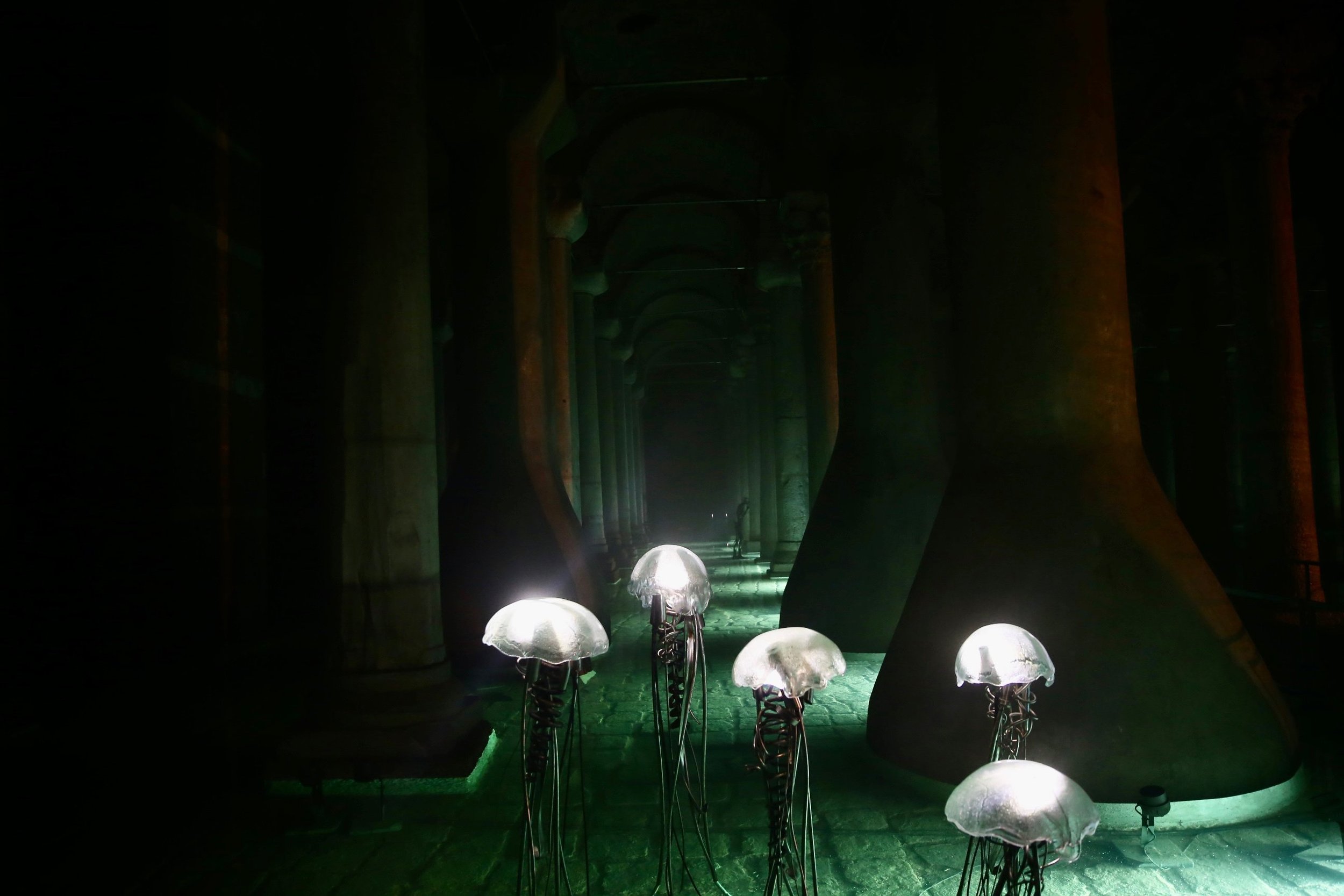The Byzantine Basilica Cistern, one of Constantinople's (Istanbul) most historical buildings, was reopened to visitors with the completion of the restoration process that started in 2017. In addition to the earthquake strengthening works, the lighting was also overhauled in the museum.
The Basilica Cistern or Cisterna of Illus (Greek kinsterne=κινστέρνη), now known as Yerebatan Saray (Turkish: underground palace) or Yerebatan Sarnıcı (Turkish: underground tank) is the largest underground water tank built in Istanbul, measuring approximately 141 × 66.5 m in plan and with a capacity of 78,000 m3. It is located on the first hill of the city, about 150 meters southwest of Hagia Sophia, in the Sultanahmet area of the historic center.
The Basilica Cistern impresses visitors with its 336 columns, each 9 meters tall, and two Medusa heads. The columns are mostly cylindrical and made out of a single block. The two Medusa heads, two great examples of Roman era architecture, garners a lot of attention. Both work as the bases for two of the 336 columns located on the northwest side of the cistern. They are thought to have been brought to be used as supports for the columns at the time of construction of the cistern.
An interior view of the Basilica Cistern Museum, Istanbul, Turkey, July 22, 2022. (IHA Photo)
It was named so because of its position, below the Stoa Basilica which was west of Augustaion. The Stoa was probably built by Constantine the Great but was destroyed around 475. The cistern was shaped as it is today, when it was rebuilt around 542 by Emperor Justinian I, after the period of the Nika Riots, to supply water to Constantinople throughout the Byzantine period and to supply water to the adjacent Great Palace, where the Byzantine emperor had his seat.
It was one of Justinian's most important public works and an excellent example of Byzantine engineering. The Greek historian Procopius of Caesarea gives a detailed description of the cistern in his work ‘the Buildings’, noting that fresh water was brought into it by means of a conduit, while a quantity of water was also stored there, which was usually abundant in seasons other than summer.
After the conquest of the city by the Ottomans, knowledge of the cistern seems to have been lost, but it was later discovered by Pierre Gilles (or Petrus Gyllius, 1490 - 1555) during his tour of Constantinople in the mid-16th century. Gilles describes how the residents had no knowledge of the reservoir's existence, despite the fact that they pumped water and caught fish by throwing buckets into the basements of their houses.
A view from the light-themed exhibition at the Basilica Cistern Museum, Istanbul, Turkey, July 22, 2022. (AA Photo)
After the Fall of Constantinople, the water from the Royal Cistern was used to irrigate the gardens at the Topkapi Palace (Topkapi Sarayi). From the 18th to the middle of the 20th century, restoration works were carried out to preserve the cistern, which, after a renovation that began in 1985, had been open to the general public since 1987 and is one of the most important and oldest public spaces. Musical concerts are given in its space with excellent acoustics.
photos by AFP/IHA/AA
As part of the restoration, launched in 2017, the ties fixing the columns to each other were renewed to prepare the construction for a possible earthquake. The entrance hall of the cistern was also redesigned while the lighting was renovated. The cistern now hosts visitors with an exhibition themed "light."
The Basilica Cistern Museum can be visited between 9 a.m. and 5 p.m.











